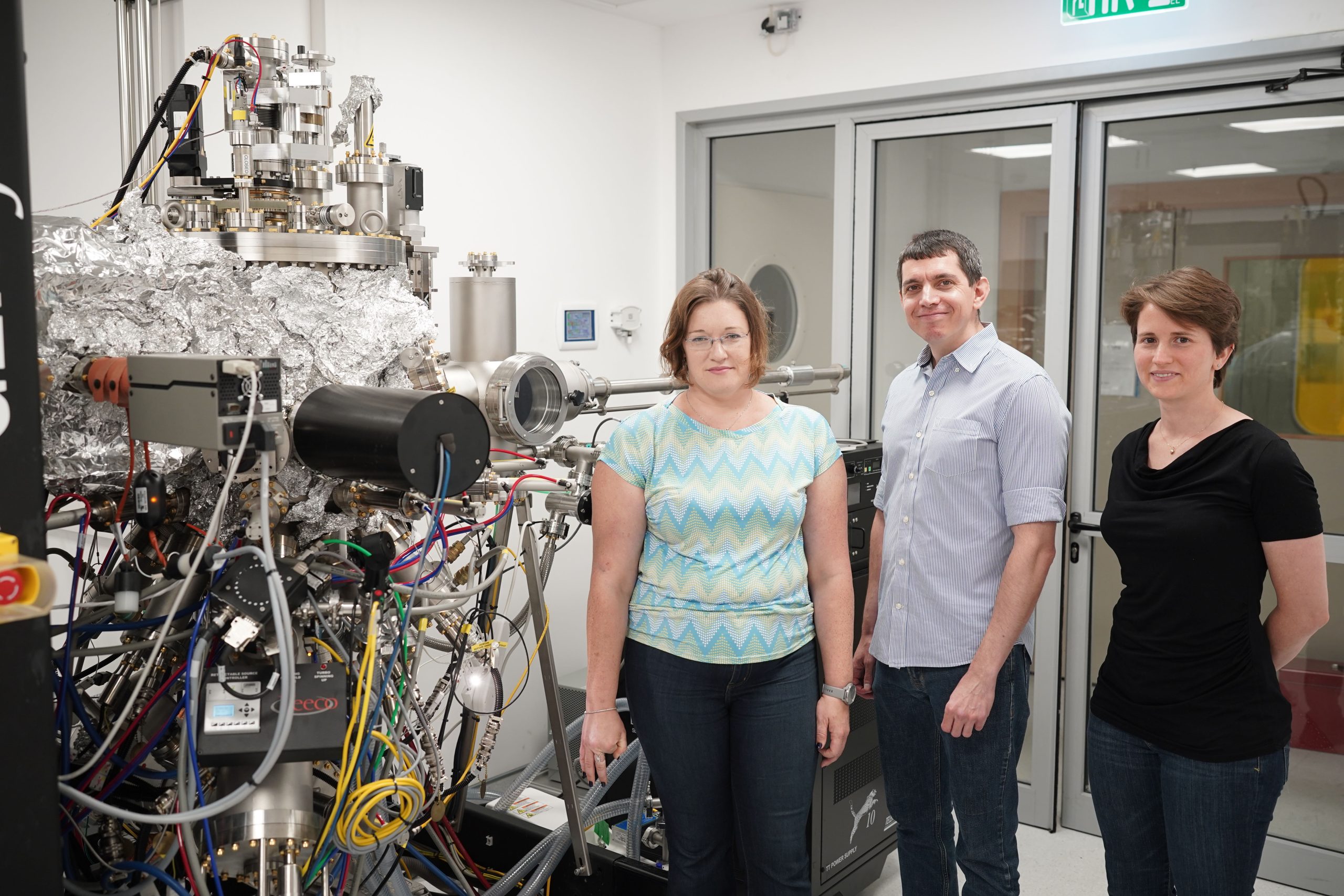Researchers in the Andrew and Erna Viterbi Faculty of Electrical and Computer Engineering have demonstrated control over an emerging material, which they consider as a possible future alternative to silicon in microelectronics. This is a timely development, because scientists and engineers face challenges in continuing the transistor shrinking trend, an important driver of computer chip performance.
[[{"type":"media","view_mode":"default","fid":"178549","attributes":{"alt":"","class":"media-image img-responsive","height":"351","typeof":"foaf:Image","width":"660"}}]]
L-R: Dr. Maria Baskin, Lishai Shoham, Prof. Lior Kornblum
Integrated circuits, more commonly known as computer chips, or simply chips, are at the core of modern life, responsible for processing, storing, and transferring massive amounts of data. Chips are responsible for countless tasks, including vaccine development, spacecraft designs, internet infrastructure, big data, autonomous vehicles, artificial intelligence, and the internet of things.
The continuous performance improvement of these chips has been driven by shrinking the size of the most basic logic “Lego” piece – the transistor. Transistors are miniature switches that control the flow of electric currents, analogous to a faucet controlling the flow of water. Already in the early 1960s, Gordon Moore, the founder of Intel, proposed that the transistors’ miniaturization rate should allow doubling of the number of transistors per area every 2 years. This prediction, coined Moore’s Law, has dictated the miniaturization rate for decades. Presently modern chips contain billions of transistors on about a square centimeter.
In 2007, Moore declared that his law would come to an end within a few years. The CEO of Nvidia expressed an even more pessimistic view last year, saying that “Moore’s Law is dead,” a view shared by other technology experts.
to read more



